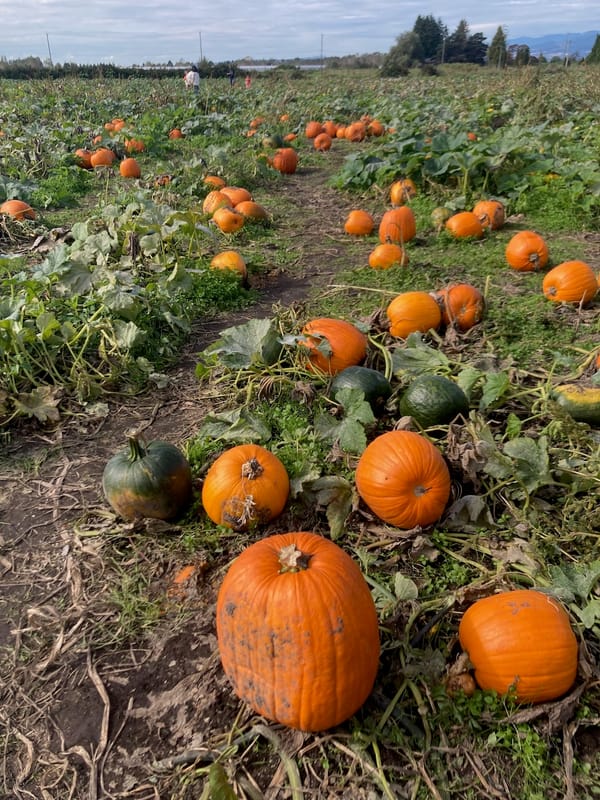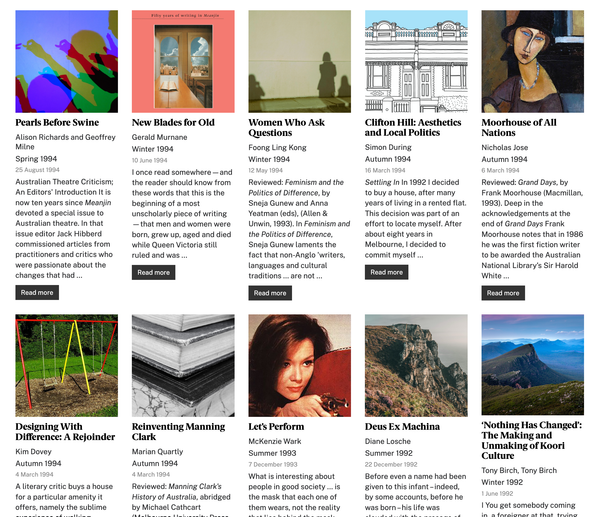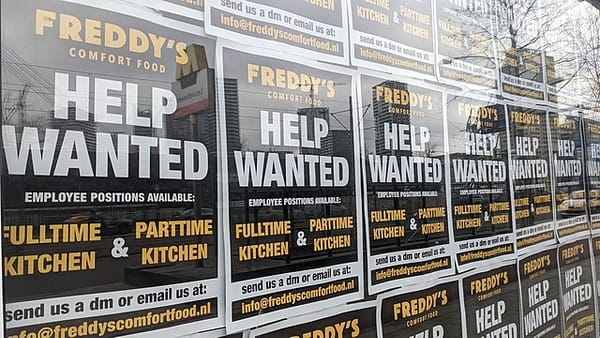Putting on a Show
On DIY PR, content capital, newsletters about writing

A long time ago I was a frustrated would-be academic sharing an office with another frustrated would-be academic who was older and more experienced than me. She often let off steam about her creative writing students. They’re not interested in writing, she would say. They want to be writers. What did she mean by this? That her students wanted to talk about their work more than they wanted to work at it. That they were getting ahead of their drafts and imagining themselves pitching as-yet unfinished manuscripts to agents and publishers, or talking to readers about their unwritten books from a festival podium. That they were thinking about their careers.
In her classes, my colleague wanted to privilege one form of literary work, writing, over another, the labour required to project a public persona as a writer. Both forms of labour might traffic in language and affect, both of them are required for writing to circulate in the world, whether online or in print, but she saw one form of labour, career development, as a distraction from the true work, writing itself. At the level of concept this distinction is easy enough to understand and retains currency – witness the proliferation of the #amwriting hashtag and writers retreats, for example – in practice the boundary between these two forms of literary work is porous. To hold apart writing and being a writer strikes me now, as it did then, as a rather silly rhetorical exercise, and also as a form of wishful, if not privileged, thinking. Madeline Cash’s career advice, dispensed in an interview with Nylon last year, is probably more useful: ‘If you don't have rich parents, being a writer is one part talent and two parts networking. Being a writer in 2023 is also being an agent and editor and PR girl.’ This chimes with Christian Lorentzen in 2021 on careerism as the dominant literary style in America: ‘This is neither a judgment nor a slur. For decades it has simply been the case that novelists, story writers, even poets have had to devote themselves to managing their careers as much as to writing their books.’ Some people do manage to stay offline but it’s very difficult for writers, especially young and ambitious writers, to opt out of the online brand-building work, to devote themselves to writing, rather than spending time cultivating a public persona as a writer.
There are writers, it must be admitted, who take to the career-management side of things with more gusto than others. But even those well-equipped to act as their own agent and editor and PR girl struggle. See for example influencer-turned-novelist Olivia Muenter’s account of the deranged expectations that writers have internalised vis à vis book promotion in a recent interview with the newsletter :
I mean, it's all very meta to be honest, because every time I think, “I should create this piece of content or this piece of content that promotes the book,” I'm thinking about every theme in the book about yourself as a brand and things going viral and all of that. So I am a little bit intimidated by BookTok, to be quite honest. I posted one TikTok the other day about it, and it was sort of about this experience I had when I got the book and you're supposed to film yourself unboxing it, there's like emotional music playing in the background, and you're crying. I did record it but I didn't hit record, so like, I just have this vision of me on my front steps having this really big moment and I was like, “Oh, the internet has really broken my brain.” And I'm like, “Oh yeah. The entire book is that.” So the TikTok was sort of about that experience. But I find the internet very confusing when it comes to book stuff.
I too find the internet very confusing when it comes to book stuff! The pressure that Muenter is talking about is not new, and nor is the glamorisation of the figure of the writer, which is what so vexed my colleague all those years ago – but it has intensified.
Five years ago the dutiful online writer was always tweeting, always posting on Facebook, chatting away on Instagram. She was building relationships with readers – the audience – and with other online types in the literary world. Now she is probably making TikToks, especially if she’s a young millennial or Gen Y, and if she’s not writing a newsletter, she sure as hell is thinking about doing so.
At least on my feeds, it has been women writers who have been most visible in their use of social media to build intimate relationships with audiences. And accordingly critiques of this self-promotional labour tend to be quite gendered, and rely on the kind of language used to marginalise forms associated with women’s writing such as memoir, personal essays and autofiction; solipsism, narcissism, unseriousness, shamelessness. The canard that frankly mediocre writers can build literary careers out of their willingness to self-promote, especially on social media, continues to circulate. In truth, almost no one is able to build a literary career these days, if a career is understood to signify a sustainable income. Bear in mind too that in the literary world, which is as conservative as it is bitchy, ‘frankly mediocre writers’ can serve as code for women writers, or POC writers, or authors of genre fiction, or authors of autofiction, or writers whose books have sold an unseemly number of copies. Mostly the case is that writing is precarious work and opportunities for sustainable income continue to diminish. Writers do the hustle because they have to. Being highly visible online sucks up time and exposes writers to harassment and ridicule. The hope is that the PR work will one day pay off, whether in the form of paid gigs, commissions, an audience willing to buy tickets or books.
Kate Eichhorn defines the term ‘content capital’ in her short 2022 book Content. It was a new term for me, and it gives me the ick, because, ugh, content, but the concept is instantly recognisable:
one’s ability to engage in work as an artist or a writer is increasingly contingent on one’s content capital; that is, one one’s ability to produce content not about one’s work but about one’s status as an artist, writer, or performer.
Following Eichhorn, we can see how the requirement to produce content capital effectively reverses the priority of writing – or, more properly, the kind of writing that results in publication mediated by publishers and editors – and the production of the writer as a public figure, work that may indeed require more writing. Muenter’s funk about her TikTok video is a good comic illustration of this contingency but I take Eichhorn’s theorisation of content capital as a prompt to think about newsletters.
Newsletters are being sold to writers as a remedy for the professional perils of the moment: income precarity, the sudden instability of social media platforms (who uses Facebook anymore?), the difficulty of connecting with readers, the unpredictability of book sales, the choosiness of editors, all of that. They’re a place to publish new work as the business models of magazines, journals, independent publishers, newspapers collapse. On the face of things, writing a newsletter seems like work that’s more aligned with a literary career than shooting unboxing videos. It involves establishing a relationship with readers through writing, for starters. Newsletters also dangle the prospect of a regular income, which is to say that some writers are able to make a decent living from them, or a portion of a decent living, and in so doing offer hope to their peers. (One convention of newsletter writing is a useful candour about their capacity to generate income.) And yet having immersed myself in literary newsletters over the past twelve months, it’s my strong impression that newsletters are mainly vehicles for content capital. Rather than creating spaces where writers can develop their craft, take creative risks, or expose readers to commercially non-viable writing, literary newsletters tend to be places where writers find themselves doing even more self-promotional work, producing a new form of content about their status as writers.
Whereas the authors of newsletters devoted to food or media or politics tend to rove fairly widely across their chosen discipline insofar as it connects with current affairs, literary newsletters are dominated by longform literary content capital: craft writing, reports on an author’s work in progress, digressions in first person Künstlerroman mode. George Saunders preaching the craft to his rapt audience of short fiction devotees is the obvious big dog but he’s got plenty of company. And it seems to be the case that in writing about writing, about craft and the life of the writer, writers are able to generate an income from their newsletters.
The newsletter scene is changing rapidly and I’ve recently been watching newsletter authors effectively professionalise in order to increase the income they earn from their writing. Substack makes it pretty easy to offer paid subscribers perks, whether in the form of access to paywalled content or to groups of commenters, aka communities. The newsletter itself can be a form of self-promotion, a place to advertise workshops, public events, or whatever services an author might have up for grabs. Some writers use them as a glorified mailing list. Like Instagram and Twitter, a newsletter can serve the harder to quantify goal – beyond numbers of followers and subscribers – of building a profile and audience, of building a brand.
None of this is a judgment or a slur. I’m not naming names because no one deserves to be singled out for trying to make a living. And although a fair bit of newsletter craft talk is highly disposible, it’s also true that a lot of craft writing is terrific! And useful! I’m a reader who is extremely interested in the way writers work and their reflections on craft, and have been reading essays, books, interviews about process since forever. I’m deeply curious about composition, about creative labour under neoliberalism, about the social and economic conditions that produce literary culture. These themes were the foundations of the SRB’s Writers at Work series, which also yielded the Open Secrets anthology, published in 2022. There are many readers like me, and many aspiring writers who wish to learn from the writers they admire. And of course, there are some authors who use their newsletters to figure out new ways of writing, including about their craft.
And yet stepping back and trying to form a view of this emerging genre, the literary newsletter, it’s hard not to see the proliferation of content capital, of craft writing, as signs of the waning authority of the writer and the limited possibility of the genre itself. Newsletters might look like successors to zines and other forms of independent literary self-publishing but their range is narrower, and often the career stuff is where it begins and ends. The current pathways to newsletter success reinforce the expectation that writers are most interesting, and most authoritative, when they write about themselves and their process, rather than about the worlds around them. What is it that writers can write about in this new space? Writing and being a writer. How can writers make an income? By writing about being a writer. It’s a shrinking sphere of influence – and this at a time when reading, writing and thinking about literature, are already a highly marginalised set of practices.
This superflux of content capital is exhausting for writers to produce, and it’s also exhausting for readers to parse. How to negotiate the cordons placed by some writers between their writing writing, the work that goes to their editors and publishers, and their newsletter writing? How do readers – and critics and scholars – integrate the ever-mounting volume of writing self-published in the name of career-management, whether on TikTok, in newsletters, or on Twitter, into an understanding of literary practice? Me, I’ve no idea what kind of attention to bring to the actual content of literary newsletters. Are we to read it as ephemera, or dismiss it dross, or scrutinise it as the side hustle that makes the writing writing possible? Is it paraliterary material, to follow Merve Emre’s usage, the stuff that provides a scaffold to accessing the properly literary material?
Of course, it’s not all newsletters. I hasten to point to some newsletters that do not conform to these patterns, or that complicate them. Maggie MacKellar’s is a living, breathing example of a newsletter that has expanded an author’s practice and audience, that has been a platform for experiment and play. I asked Maggie to write about it for the Sydney Review of Books in early 2022. A Curious Experiment is a revealing piece. In it, Maggie speaks directly to the financial benefits of writing a newsletter –
By the end of the first month I had earned more than the paltry advance paid by a large publishing house for a book I had worked on for four years.
– and reflects on how the structure and discipline of putting together a weekly newsletter has reshaped her writing practice. The newsletter does, yes, open a window onto her life as a writer but that is secondary to its role as a vehicle for a highly situated regular writing practice, one that models a form of attention to daily life, which in her case, is mostly lived on a farm in Tasmania. I’m also keen on the prodigious Bram Presser’s , which publishes reviews of novellas, and nothing but! And Carmen Maria Machado’s reminds me of blogs of yore in that it is about writing, but also about TV and gaming and cooking and drinking. Her style is provisional – she calls it ‘long-form slightly-too-honest meandering’ - and she uses the newsletter as a space to work through ideas, rather than presenting them in highly polished form. Of course it helps to have established a big reputation and existing readership to make a newsletter like this work as a business venture, but the looseness of the style strikes me as bold and open, as a way to enlarge the space the writer might occupy in the world. Reading Machado’s newsletter, we’re in the company of a writer who is interested in everything, in writing, and in everything else.
‘The destruction of literature’s condition of possibility in Gaza constitutes the destruction of Palestinians as a people who can tell their stories and hand down their living cultural heritage.’ I am a signatory to this open letter that expresses the acute sorrow and outrage of Australian teachers and researchers of Literature and Creative Writing at the loss of innumerable colleagues and peers in our fields in Palestine over the last five months. We must not relent in our calls for an immediate ceasefire and we must commit to the preservation of Palestinian cultural heritage.
‘What kinds of sources do we need to reconstruct the story of Palestinian literature, and where shall we dig?’, asks Refqa Abu-Remaileh in a 2021 paper published in the Journal of Arabic Literature titled ‘Palestinian Literature in the Digital Age of the Refugee’. This question has new and terrible pathos as so many sites devoted to Palestinian culture and literature, including universities, have been reduced to rubble, and so many writers have been killed. Abu-Remaileh proposes thinking of the digital sphere ‘as the place where the fragments of the story of Palestinian literature, from different periods and geographies, can come together’; with a team at the Freie Universität Berlin she built a stunning transnational atlas of Palestinian literature called Country of Words. It’s a project that must contend with Palestinian literature both as it is tied to the lands of the Palestinian people, and to the experiences of displaced Palestinians. Palestinian literature is, she writes, ‘a literature written by refugees and exiles scattered across Palestine, the Arab region, and the world at large.’ And so Country of Words offers a dynamic map of writers, publishers and literary journals, a resource that allows users to follow the movements of displaced Palestinian writers and to witness the formation of new literary communities, and sometimes their displacement. It is a hopeful project in that it insists on the value of cultural preservation in the face of violence, dispossession and displacement, not as consolation, but as necessity.
Thanks for reading Infra Dig! Subscribe for free to receive new posts and support my work.



